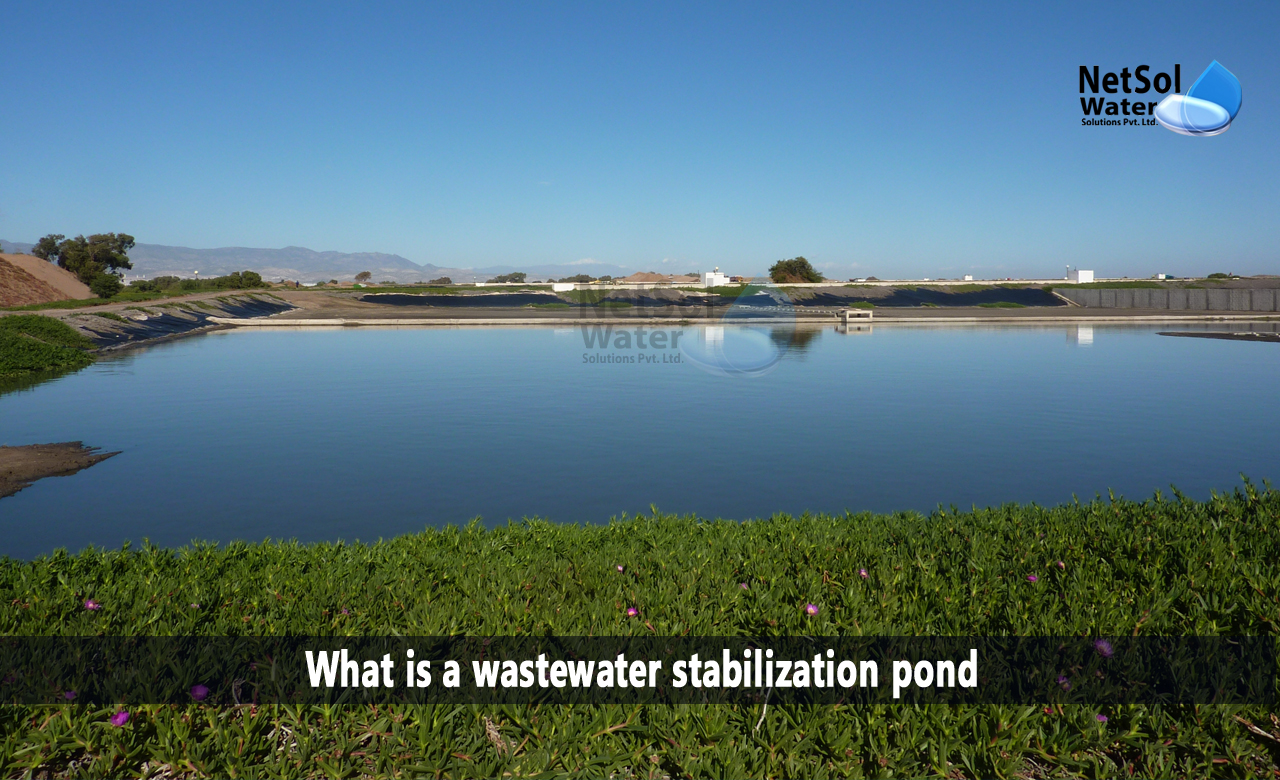What is a wastewater stabilization pond?
Waste or wastewater stabilization ponds (WSPs), often referred to as stabilization ponds or waste stabilization lagoons, are ponds constructed for the treatment of wastewater, to lower the organic content and eliminate pathogens. They are man-made depressions encircled by earthen buildings.
The waste stabilization pond's wastewater, or "influent," enters on one side and, after spending several days there and going through treatment procedures, emerges on the other as "effluent."
Use of wastewater stabilization ponds
WSPs are employed for wastewater treatment all throughout the world, and they are particularly suited to warm climate developing nations. Although, they can also be used to treat municipal runoff or storm water, they are most frequently employed to treat sewage and industrial effluents. The system could consist of a single pond or numerous interconnected ponds, with each pond contributing to the removal of pollutants in a different way.
They are sizable, artificial bodies of water where feces, greywater, or blackwater is treated naturally by the action of microbes, algae, wind, and sunlight. The ponds can be utilized alone or in groups to enhance treatment.
Working of Wastewater Stabilization ponds
The anaerob?ic pond, which is the first stage, lowers the organic load in the wastewater. This artificial lake is anaerobic across most of its relatively deep depth. Within the collected sludge, solids and BOD are eliminated through sedimentation, and subsequent anaerobic digestion. Up to 60% of the BOD is removed during the conversion of organic carbon, into methane by anaerobic bacteria.
Through a sequence of WSPs, the effluent from the anaerobic pond is transported to the facultative pond, where more BOD is eliminated. The oxygen in the pond's top layer is produced via photosynthesis, wind mixing, and natural diffusion of algae.
The lowest layer turns anoxic or anaerobic because it is oxygen-deficient. Solids that settle to the bottom of the pond build up and get digested there. Together, aerobic and anaerobic organisms can reduce BOD by up to 75%.
Purpose of anaerobic, aerobic and facultative ponds
The purpose of facultative and anaerobic ponds is to eliminate BOD, while the purpose of aerobic ponds is to remove pathogens. An aerobic pond is often referred to as a maturing, polishing, or finishing pond, since it typically represents the last stage in a chain of ponds, and offers the highest level of treatment.
Design considerations of waste stabilization ponds
The depth of anaerobic ponds ranges from 2 to 5 meters, and their detention periods range from 1 to 7 days.
Facultative ponds should be built with a detention time of five to thirty days, and a depth of one to two meters.
Aerobic ponds typically range in depth from 0.5 to 1.5 m and have a retention period of 15 to 20 days. This kind of pond is efficient in removing the bulk of nitrogen and phosphorus from the effluent, when used in conjunction with algae or fish harvesting. In order to achieve a high level of pathogen elimination, numerous aerobic ponds should ideally be constructed in sequence.
Conclusion
Pre-treatment is necessary to stop the creation of scum, as well as the entry of extra particles into the ponds. The ponds need a liner to stop seeping into the groundwater.
Clay, asphalt, compacted earth, or any other impervious substance may be used as the liner. The excavated material should be used to build a protective berm around the pond, to shield it from runoff and erosion. In order to keep people, animals, and waste out of the area and out of the ponds, a fence needs to be put up.
Advantages of waste stabilization ponds
Waste stabilization ponds by Netsol Water provide various advantages, such as:
· Able to withstand hydraulic and organic shock loads;
· High reduction of pathogens, BOD, and solids;
· Aquaculture paired with high nutrient removal;
· Low cost of operation;
· No electrical power is necessary;
· If planned and maintained properly, there won't be any significant issues with flies or odours;
· Can be created and rebuilt using resources that are easily accessible locally;
· Effluent can be recycled for irrigation in agriculture or aquaculture.
What do we have to offer?
Stabilization ponds in wastewater treatment may be the greatest option for your company. The first step is to determine how much water you need and how good your water is.
To assist you with this process, Netsol Water Solutions’ provide a wide range of water and wastewater treatment plants. For further information or to make a purchase, please contact us at +91-9650608473 or enquiry@netsolwater.com



